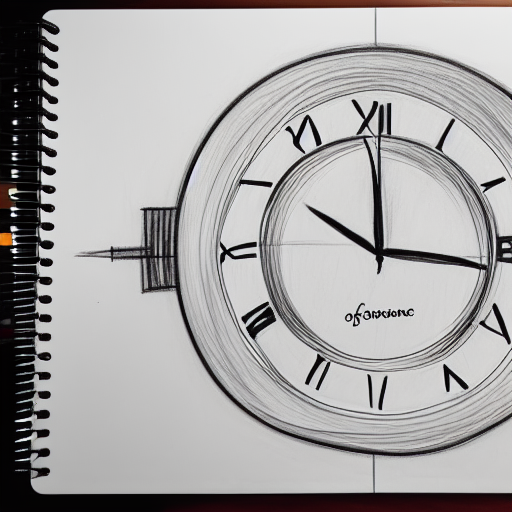There are several tips on how to organize your time effectively. These include making a “to-do” list, scheduling activities, setting time limits, and taking breaks. You can also use a calendar to track your schedule. Whatever you choose to do with your time, be sure to set aside some time each day to do creative activities.
Creating a “to do” list
Creating a “to do” list helps you prioritize and get things done. It should be based on priority and be as small as possible. You should also label each task according to the category it belongs to. You should use colored labels to easily identify the tasks.
You should include difficult tasks in your to-do list as they often serve as motivation for further work. However, do not forget to break them into smaller pieces, so that you will be able to complete them before the due date. Remember that a good schedule should allow time for flexibility, as you may need to complete more than you planned.
A “to do” list also helps you stay focused and organized. It allows you to identify what needs to be done immediately and what can wait. You will not feel overwhelmed by your work load and will be able to manage your time more efficiently. Keeping a to-do list will also help you prioritize tasks, and it will give you a sense of accomplishment when you complete a task.
To make a to-do list more visually appealing, choose a pretty bulletin board or paper with your favorite color. Alternatively, you can write your tasks on your smartphone. Just make sure your list looks great and inspires you. Keep your to-do list updated regularly.
A to-do list is an essential tool for time management and goal-setting. While the task list can help you organize your time, it can also do you more harm than good. When you have a daily or weekly list, you know which tasks should be prioritized and can set reminders for them.
Using a calendar
A calendar helps you stay on track with important appointments, deadlines and birthdays. It is a time management tool that you can use in the workplace. People who use a calendar are more proactive. They do not immediately respond to every email or text. Instead, they check their emails only two or three times a day. They also don’t expect a response right away. If you want to be more productive at your 9-to-5 job, using a calendar will help you achieve this goal.
To maximize its benefits, a calendar should not be filled to the brim. It should have some space left for unexpected tasks or creative ideas. It’s also a good idea not to have more than one calendar. While this may seem counterintuitive, it will help you save time and avoid confusion.
Another advantage to a calendar is that it allows you to set reminders. These reminders help you manage your schedule more effectively and focus on tasks that need to be completed now. It can also keep you alerted to upcoming deadlines and time-critical tasks.
Another benefit of a calendar is that you can easily personalize it. You can write notes, use highlighters, and add other stationery to your planner. A calendar will also help you visualize your schedule. You can create categories and divide each day into different sections. You can also add notes and add events so that you can easily find important items and complete them.
Another benefit of a calendar is that it’s free, and integrates well with other organizational tools. There are a variety of calendar apps for smartphones, tablets, and computers. Google Calendar is the most popular, with over 500 million users worldwide. Not only does it integrate with other Google services, but it also offers desktop and browser-based versions.
Setting time constraints
The best way to organize your time is to understand how long a task takes and to set reasonable time constraints for yourself. This way, you won’t end up stressing out and spending more time than necessary on unproductive activities. Setting time constraints will also ensure that you stay focused.
A time constraint is a deadline for a specific project or task. It includes a final date for a deliverable and deadlines for each stage. In the case of a project, time constraints refer to the deadlines for each phase. This is because the task involved must be completed in a particular sequence. In addition, time constraints also apply to the costs involved, such as labor, vendors, and quality control.
Taking breaks
A break from a project is beneficial for your health and your productivity. It helps you relax and reduces stress. Taking a break from your work can include physical activity or a simple walk around the block. Vacations or playcations can also help you get away from the routine and relieve stress. By scheduling breaks, you will be able to complete them at the right time and return to your job feeling refreshed and more focused.
Research shows that working without a break is bad for your health and your productivity. Human beings can’t focus for eight hours straight. In a typical eight-hour workday, most employees only get two hours and 53 minutes of productive time. When you don’t take a break, you take your work stress home with you, which could negatively affect your performance.
According to Forbes, taking breaks improves performance, creativity, and overall self-esteem. In fact, 90 percent of bosses encourage their employees to take breaks. Breaks also help you prevent burnout. Companies like Google, Apple, Facebook, and Coca-Cola recognize the value of taking breaks.
Taking short breaks during the workday can increase productivity. Short breaks can be as little as ten minutes long. Taking short breaks is especially beneficial if you spend long hours at a computer. Breaks will improve your concentration levels and give you energy. Breaks will also help you stay healthy.
Taking breaks helps the brain and body recover from prolonged periods of stress. Excessive work can lead to fatigue, increased stress, and poor cognition. By taking time to relax, you can accomplish more in less time. Taking breaks every day can be an essential part of your schedule. Take a short walk, play a game of ping pong, or even meditate during your time off.
Planning ahead
One of the best ways to organize time is by planning ahead. You can do this by using a calendar. This can help you plan for upcoming events, holidays, and benchmark goals. When you plan ahead, you’ll have more time to complete projects and achieve your goals. And planning ahead also helps you avoid problems that can make your day hectic.
Planning ahead can also help you maximize your personal effectiveness and improve time management skills. You’ll be able to make more progress with less effort and less time when you plan your day ahead. It may seem obvious, but some people struggle to plan ahead. Creative people, for example, may have a hard time turning their ideas into action. They need to be guided through the planning process.













